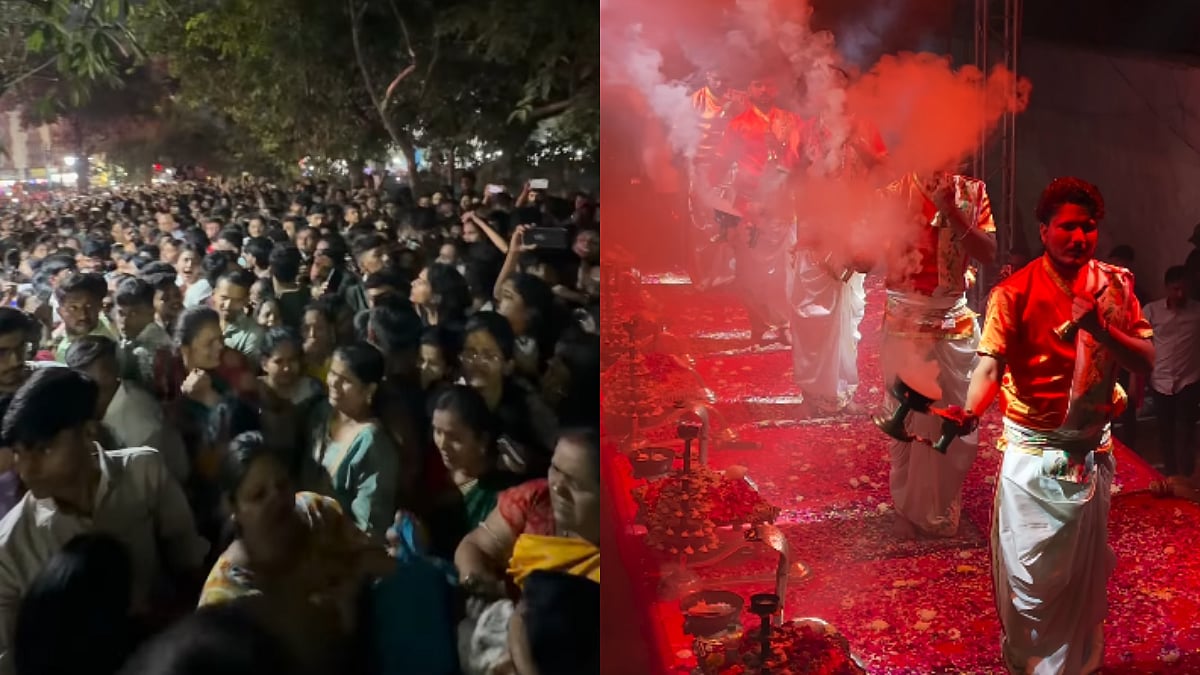As Mumbai's air quality had just shown some improvement, it once again deteriorated after being hit by a third successive dust storm from Gulf in just one month — this time highly widespread but not intense —it emerged and engulfed the entire Arabian sea with dust, claim air quality researcher scientist. The Air Quality in the city is likely to remain poor for the next two days before improving to a moderate level, scientists and meteorologists have hinted.
Meanwhile, the city’s overall air quality index (AQI) on Saturday settled at a ‘very poor’ at 302, after recording an AQI of 255 (poor) on Friday. However, on Sunday evening, it deteriorated to 304 (very poor). Areas of Malad, Mazgaon, Worli have all recorded AQI over 320 (very poor).
Scientists have pointed at climate change likely to be responsible for some unusual weather events like extreme pollution events like these.
Talking about the impact, Gufran Beig- founder and project director of System Air Quality Weather Forecasting And Research (SAFAR), under the Ministry of Earth Sciences, "The third successive dust storm in the past month emerged on February 24 again which is not intense but highly widespread and engulfed the entire Arabian sea with dust as evident from satellite imagery. Slow but consistent intrusion owing to favourable winds and push due to westerly disturbance (made hailstorm in Delhi and surrounding areas) made an entry of huge area dust cloud with low density, near Surat coast and made AQI of Ahmedabad and surrounding area until Maharashtra coast in the very poor category. It was already predicted that the same cloud will get further intensified with the clouds of Afghanistan and the upper edge of the Thar region of Pakistan and will deteriorate AQI of Mumbai to Ahmedabad belt in very poor quality. The impact is felt in Mumbai but relatively less and AQI of Mumbai became poor from satisfactory from February 25 and jumped to very poor on Saturday and Sunday. However, due to warmer local conditions, it is likely to subside by February 28 and March 1."
The source of duststorms is always the desert regions of the Gulf, Afghanistan and Pakistan. However, dust lifting or dust storm phenomenon witnessed during June and July do not impact Mumbai or other neighbouring regions due to the monsoon season in India. However, during the spring and summer seasons when factors such as high temperature, atmospheric instability, strong northwesterly winds and thunderstorms create ideal conditions for the triggering of dust storms and lead to extreme pollution events.
Elaborating on this phenomenon Beig said: " The frequency of the westerly disturbance towards the fag end of January and February is not much generally. However, this time during the last month that is between January and February , around three westerly disturbances have occurred leading to widespread moisture infusion. Also, the on and off rainfall accompanied by a hailstorm in the northern part of India including Delhi played its part. However, these westerly disturbances have little effect in the lower part of western India in coastal bed from Gujarat to Goa and Maharashtra including cities of Ahmedabad, Surat to Pune and beyond including Mumbai."
He added, "However, the upper air winds blowing where the dust particles normally travel becomes much faster in these areas over the Arabian sea. During this period over the Thar desert extending from Afghanistan, Pakistan, Iran and parts of Rajasthan in India the dust lifting is often noticed, however, an unusual phenomenon in this is that the dust lifting was widespread and intense and turned into a dust storm coincided with a period of westerly disturbances over the region. The high-speed winds triggered by westerly disturbances and the dust storm from that area made these cities unusually polluted. It is significantly possible these may be linked to climate change impacts, however, further research is underway to firmly establish this link. We are studying these phenomena thoroughly."

Photo caption - The pink colour seen over India and surrounding areas in the satellite image is duststorm. |









